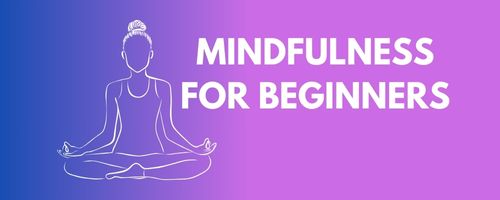Starting a mindfulness practice can be both exciting and daunting. As beginners embark on this journey, they often wonder where to begin and how to sustain their practice. Fear not! Let’s explore three foundational mindfulness techniques that will help you cultivate presence, reduce stress, and enhance well-being.
1. Breath Awareness: Anchoring Your Attention
Breath awareness is the cornerstone of mindfulness. It’s simple, accessible, and can be practiced anywhere. By focusing on your breath, you anchor your attention to the present moment.
How to Practice:
- Find a Quiet Space:
- Sit comfortably in a quiet room or a peaceful outdoor spot.
- Close your eyes if you feel comfortable doing so.
- Observe Your Breath:
- Pay attention to your natural breath without trying to change it.
- Notice the rise and fall of your chest or the sensation of air passing through your nostrils.
- Anchor Your Attention:
- Whenever your mind wanders (and it will!), gently bring it back to your breath.
- Imagine your breath as an anchor grounding you in the present.
Benefits:
- Stress Reduction: Focusing on the breath calms the nervous system and reduces anxiety.
- Improved Concentration: Regular practice enhances attention and concentration.
- Emotional Regulation: Breath awareness helps manage emotions by creating space between stimulus and response.
2. Body Scan: Cultivating Body Awareness
The body scan practice invites you to explore physical sensations systematically. It’s like giving your body a friendly check-in.
How to Practice:
- Lie Down or Sit Comfortably:
- Find a comfortable position, either lying down or sitting.
- Close your eyes and relax.
- Scan Your Body:
- Start at your toes and work your way up.
- Pay attention to each body part: toes, feet, ankles, calves, knees, thighs, and so on.
- Notice any tension, warmth, or coolness.
- Stay Curious:
- Approach your body with curiosity, as if meeting it for the first time.
- Release any tension you encounter.
Benefits:
- Relaxation: The body scan reduces physical tension and promotes relaxation.
- Body Awareness: Regular practice heightens your awareness of bodily sensations.
- Mind-Body Connection: It fosters a deeper connection between mind and body.
3. Mindful Walking: Moving with Awareness
Mindful walking is an opportunity to integrate mindfulness into your daily routine. It’s about being fully present as you move.
How to Practice:
- Choose Your Path:
- Find a quiet place to walk—a park, garden, or even your neighborhood.
- Remove distractions (put away your phone!).
- Walk Slowly and Deliberately:
- Pay attention to each step.
- Feel the ground beneath your feet.
- Notice the rhythm of your walking.
- Engage Your Senses:
- Observe the environment: colors, sounds, smells.
- Feel the air on your skin.
- Be present with each moment.
Benefits:
- Grounding: Mindful walking anchors you in the present, just like breath awareness.
- Stress Relief: Walking mindfully reduces stress and promotes relaxation.
- Connection to Nature: It deepens your connection with the natural world.
Remember, mindfulness is a practice—there’s no need to be perfect. Start with small moments throughout your day, and gradually expand. Whether you’re focusing on your breath, scanning your body, or walking mindfully, each step brings you closer to a more centered and aware existence. Happy practicing!


